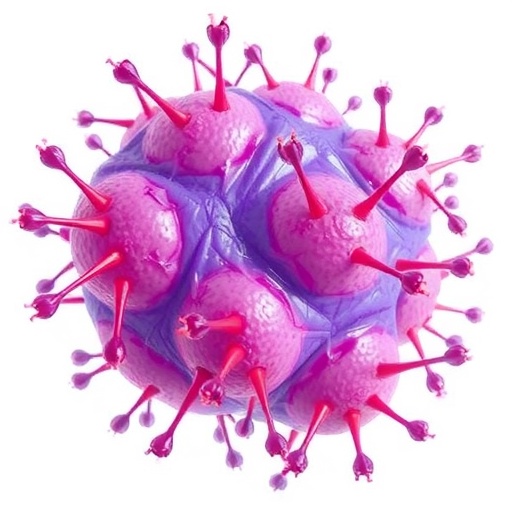In a groundbreaking revelation that promises to reshape our understanding of addiction and emotional regulation, a recent study has unveiled a fascinating alteration in the relationship between the neuropeptide oxytocin and the affective stress response in individuals diagnosed with alcohol use disorder (AUD). This discovery, chronicled by Mayer, Schwarze, Stierand, and colleagues in Translational Psychiatry, pierces through the complex biochemical web underlying addiction, stress, and social bonding, offering fresh insights into the neurobiological mechanisms that could inspire novel therapeutic interventions.
Oxytocin, often lauded for its pivotal role in social bonding, maternal behavior, and emotional modulation, has recently captured scientific attention for its potential involvement in the dysregulated stress responses seen in psychiatric disorders. Known colloquially as the “love hormone,” oxytocin’s functions extend into the subtle orchestration of social cognition, stress adaptation, and mood stabilization. This study’s revelation that plasmatic oxytocin’s interaction with affective stress is markedly altered in adults suffering from AUD highlights the integral role neurochemical imbalances play in the pathology of addiction beyond mere neurotransmitter disruption.
The research team embarked on a meticulous examination of plasmatic oxytocin levels and their relationship with affective responses to stress, deploying a battery of psychometric assessments and biochemical assays. Participants included individuals diagnosed with alcohol use disorder compared with healthy controls, allowing for a comparative analysis of oxytocin dynamics in contexts of stress provocation. The results exposed a dysregulated association between baseline and reactive oxytocin concentrations with stress markers—disruptions that might underpin the maladaptive emotional and physiological coping mechanisms common in AUD sufferers.
One of the most striking findings lies in the divergence of oxytocin-stress linkage when contrasting healthy individuals against those with AUD. While oxytocin in healthy adults showed a predictive association with attenuated stress responses—reflective of its calming and pro-social effects—in patients with alcohol dependence, this buffering influence appears compromised or altogether reversed. The data suggest that in AUD, the normative homeostatic feedback loops modulated by oxytocin become skewed, potentially exacerbating vulnerability to stress-induced relapse and emotional dysregulation.
This interplay between oxytocin and stress in the context of alcohol use disorder invites a reconsideration of traditional addiction paradigms that primarily emphasize dopamine and reward circuits. By illustrating how hormonal and peptide systems influence emotional reactivity and craving, the study delineates a more nuanced biological substrate for addiction, encompassing endocrine contributors. It thereby opens a promising avenue where modulation of oxytocinergic activity might complement existing treatments aimed at reducing relapse and enhancing emotional resilience.
Moreover, the methodology employed underscores an integrative approach by combining neurochemical analysis with affective response measurements. This paradigm leverages the dynamic fluctuations of oxytocin in plasma as a peripheral biomarker reflecting central nervous system activity, albeit with recognized limitations. The findings encourage further refinement of measurement techniques to track oxytocin changes in real time, facilitating targeted behavioral and pharmacological interventions that could recalibrate the altered association observed in AUD populations.
Importantly, the study confronts the intricate challenge of distinguishing causality from correlation in the oxytocin-stress relationship in addictive disorders. It remains an open question whether the altered oxytocin dynamics represent a predisposing vulnerability increasing susceptibility to alcohol misuse or a neuroadaptive consequence of chronic alcohol exposure and its neurotoxic effects. Longitudinal studies will be indispensable to unravel these temporal dynamics and causal pathways.
The implications for clinical translation are profound. If oxytocin pathways can be therapeutically leveraged through intranasal administration, pharmacological agonists, or oxytocin receptor modulators, a new class of addiction treatments might emerge that specifically target emotional dysregulation and stress sensitivity. Given the high relapse rates and emotional instability characterizing AUD, such innovations could dramatically enhance recovery outcomes and quality of life.
Equally fascinating is the potential broader significance of these findings for understanding other psychiatric conditions characterized by affective instability. Bipolar disorder, post-traumatic stress disorder, and certain anxiety disorders share pathophysiological features of disrupted oxytocin and stress hormone signaling, hinting that the mechanisms uncovered could have universal applicability in mental health therapeutics.
Despite its promise, this study acknowledges limitations such as sample size constraints, variability in oxytocin assay techniques, and the difficulty in extrapolating peripheral oxytocin measures to brain activity. The heterogeneity of AUD pathology and comorbid conditions further complicates straightforward interpretations. However, this foundational research sets a vital precedent for subsequent work aiming to delineate neuroendocrine profiles predictive of treatment response or relapse vulnerability.
In conclusion, the altered plasmatic oxytocin-affective stress response association reported in individuals with alcohol use disorder elucidates a previously underexplored dimension of addiction neurobiology. By bridging the domains of social neuropeptides and addiction pathology, Mayer et al. have charted a novel path for inquiry into how biochemical imbalances in love and stress hormones contribute to chronic psychiatric illness. As therapeutic landscapes evolve, integrating oxytocinergic modulation may represent a transformative paradigm enhancing both pharmacological and psychological strategies against alcohol dependence.
This innovative research stands as a testament to the intricate interplay between our neurochemical substrates and complex behaviors such as addiction, revealing that even hormones associated with love and bonding can turn awry under pathological conditions. As exploration proceeds, understanding and harnessing this dual-edged molecule may unlock unprecedented possibilities in treating one of the most stubborn and socially devastating human disorders—alcohol use disorder.
Subject of Research: The relationship between plasmatic oxytocin levels and affective stress response in individuals with alcohol use disorder (AUD).
Article Title: Altered association of plasmatic oxytocin with affective stress response in alcohol use disorder.
Article References:
Mayer, A.V., Schwarze, Y., Stierand, J. et al. Altered association of plasmatic oxytocin with affective stress response in alcohol use disorder. Transl Psychiatry 15, 421 (2025). https://doi.org/10.1038/s41398-025-03522-0




